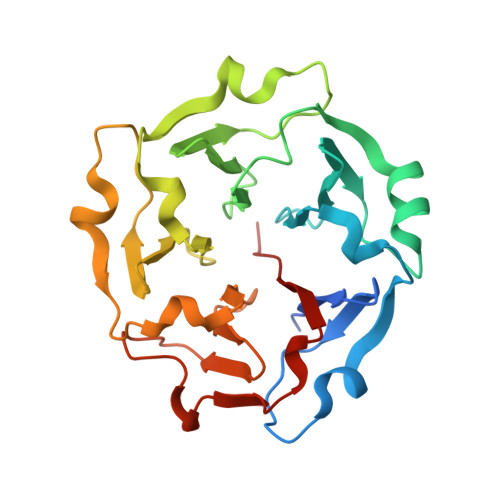De Novo Evolutionary Emergence of a Symmetrical Protein Is Shaped by Folding Constraints.
Smock, R.G., Yadid, I., Dym, O., Clarke, J., Tawfik, D.S.(2016) Cell 164: 476-486
- PubMed: 26806127
- DOI: https://doi.org/10.1016/j.cell.2015.12.024
- Primary Citation of Related Structures:
5C2M, 5C2N - PubMed Abstract:
Molecular evolution has focused on the divergence of molecular functions, yet we know little about how structurally distinct protein folds emerge de novo. We characterized the evolutionary trajectories and selection forces underlying emergence of β-propeller proteins, a globular and symmetric fold group with diverse functions. The identification of short propeller-like motifs (<50 amino acids) in natural genomes indicated that they expanded via tandem duplications to form extant propellers. We phylogenetically reconstructed 47-residue ancestral motifs that form five-bladed lectin propellers via oligomeric assembly. We demonstrate a functional trajectory of tandem duplications of these motifs leading to monomeric lectins. Foldability, i.e., higher efficiency of folding, was the main parameter leading to improved functionality along the entire evolutionary trajectory. However, folding constraints changed along the trajectory: initially, conflicts between monomer folding and oligomer assembly dominated, whereas subsequently, upon tandem duplication, tradeoffs between monomer stability and foldability took precedence.
- Department of Biological Chemistry, Weizmann Institute of Science, Rehovot 76100, Israel.
Organizational Affiliation:
















